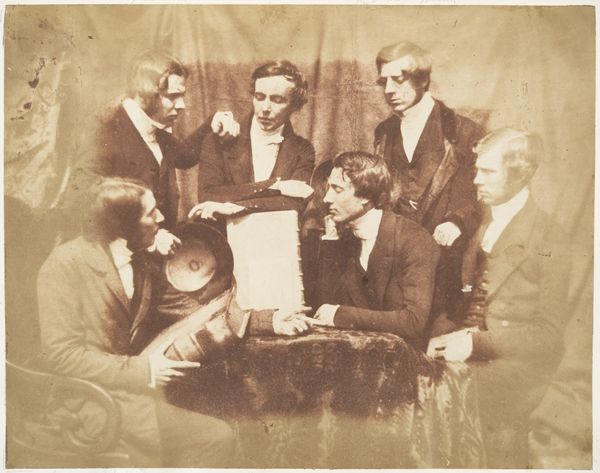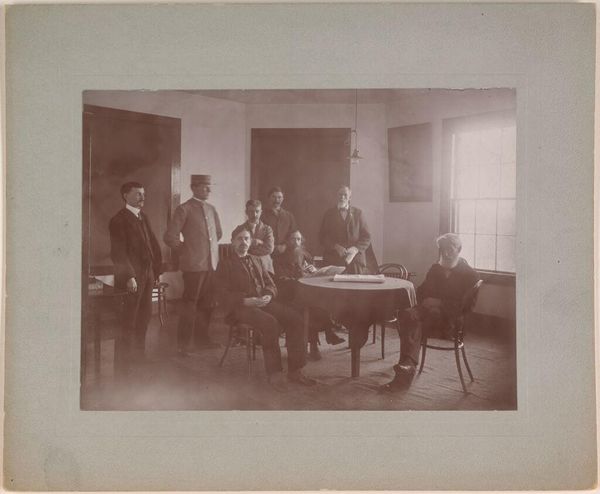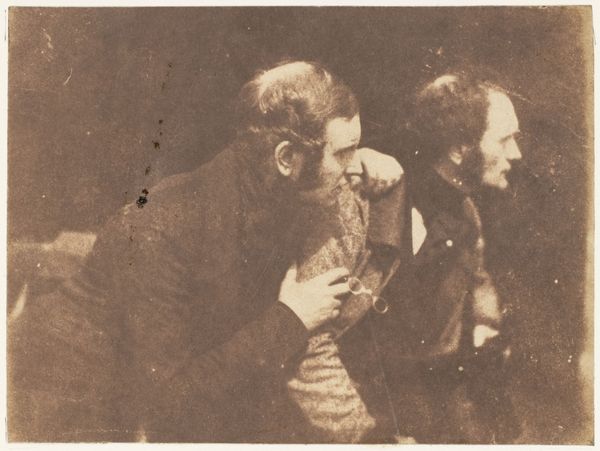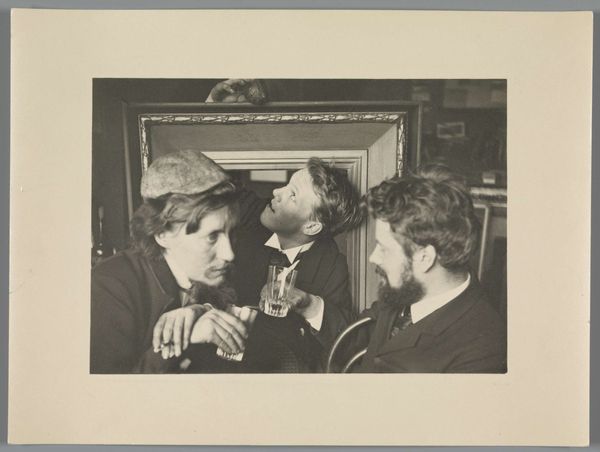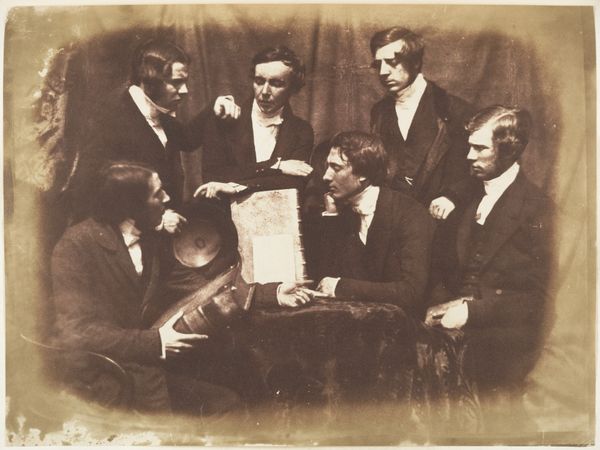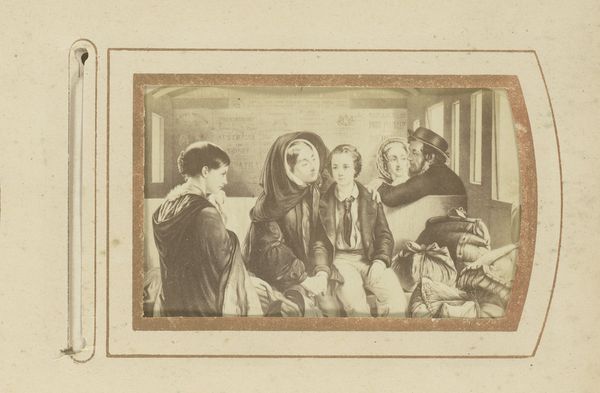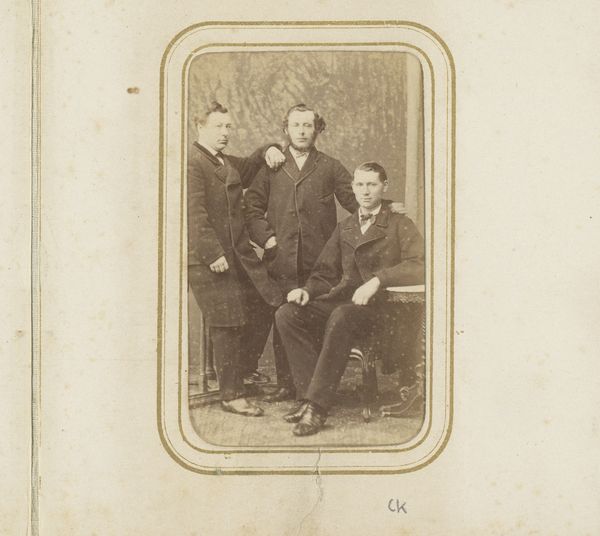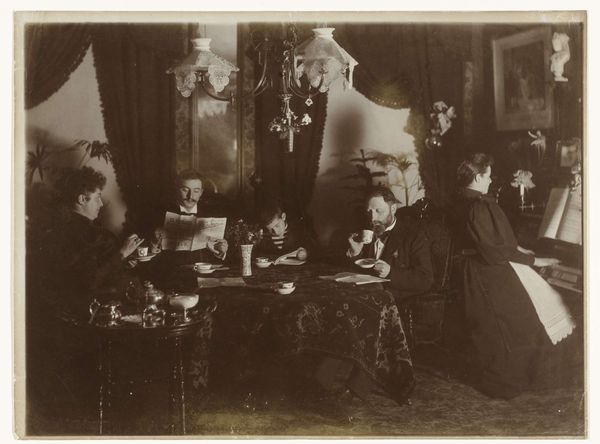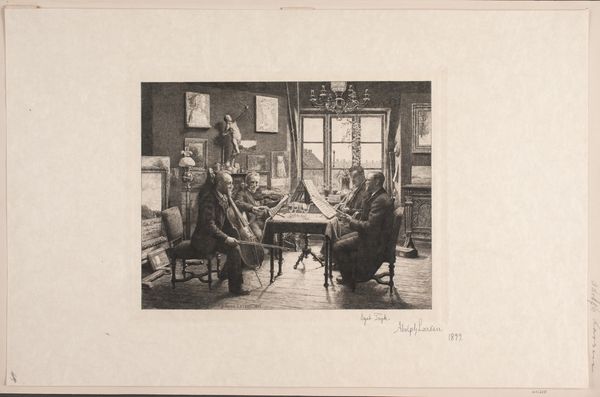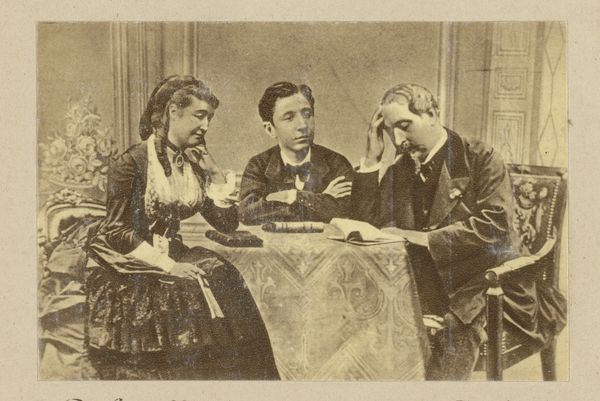
photography, gelatin-silver-print
#
portrait
#
photography
#
group-portraits
#
gelatin-silver-print
#
genre-painting
Dimensions: Image (a): 5 3/16 × 7 3/16 in. (13.2 × 18.3 cm) Image (b) : 3 11/16 × 2 5/16 in. (9.3 × 5.9 cm) Image (c): 3 1/8 × 2 5/16 in. (8 × 5.9 cm) Mount: 7 1/16 in. × 8 7/8 in. (18 × 22.5 cm)
Copyright: Public Domain
Editor: Here we have "Chess Players," a gelatin silver print dating back to the 1850s, created by Henry Maull. The photo strikes me as a study in contrasts – the dark suits against the lighter faces, the rigid poses against the suggestion of movement with the hands. How do you interpret this photograph from a visual standpoint? Curator: Primarily, I observe a conscious arrangement of forms designed to convey a sense of Victorian sensibility and stoicism. Note the near symmetrical arrangement of the figures, bisected vertically by the doorway. This establishes a certain rhythm. Further, the textures create varied reflective properties. Editor: Can you say more about the textures? What's catching your eye? Curator: Certainly. Consider the velvet collars against the etched glass. These surface modulations produce subtle tonal gradients that further highlight the contrasts between dark and light in the composition, drawing one’s eye back and forth and creating a kind of staccato across the surface. Is this an intentional effect or a product of technical limitations? Editor: That's fascinating! It makes me think about how much the materiality of the photograph itself contributes to its overall effect. I'm now also noticing how the subjects mirror each other, like pieces on the chessboard, echoing the themes of control and strategy. Curator: Precisely. It highlights how visual construction underscores thematic meaning. In your close reading, note that the framing creates meaning too; The subjects of Maull’s photograph seem staged in their respective zones to reflect the game being played. Do you perceive this intentional staging too? Editor: Yes, definitely. I see how the interplay of light, shadow, and form constructs a particular narrative, almost independent of what's actually depicted. Thanks for that, it really reframes how I see photography of that era. Curator: A deeper visual analysis almost always pays off in the end.
Comments
No comments
Be the first to comment and join the conversation on the ultimate creative platform.
